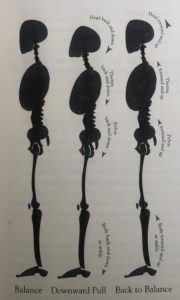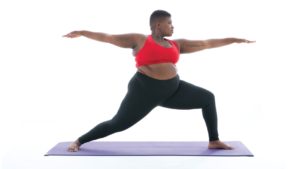Opera Explained: How do Singers Stay Healthy?
 Opera Explained: How do Singers Stay Healthy?
Opera Explained: How do Singers Stay Healthy?
By Suzanne Whitney
More than ever, our world is concerned with health. In the face of COVID-19 we are all washing our hands more often, wearing face masks to the grocery store, and staying home to protect essential workers and high-risk populations. In less extraordinary times, those of us who are lucky enough to be generally healthy may be less aware of health concerns on a day-to-day basis. However, singers are faced with a unique situation: the instrument that they rely on—day in and day out—is their body. This means staying healthy is of utmost importance.
In another life, before finding a love of marketing and a position on the team here at Opera Colorado, I spent years studying vocal health. I was particularly interested in complementary therapies to support singers’ long-term health and wellness. During these weeks of isolation I have revisited many of these techniques and standards because, more than anything, vocal health is about treating your body kindly and making sure to use it as it was built to be used.
I think all our bodies could use a little kindness these days.
Hydration

Let’s start with the basics. Humans need to drink water. Not just soda, tea, your favorite adult beverage, or—my personal downfall—coffee, but water. This is doubly true for singers. If you know any singers, I’m sure you have noticed the ever-present water bottle. Good hydration is necessary for healthy vocal production. This is because a well-hydrated body produces thin mucus. Yes, this is the part where I talk about mucus. If you are squeamish, skip on down to the next section. In order sing, talk, or make most noises, we use two tiny bands of vibrating tissue in our larynx called the vocal folds, sometimes called vocal cords. These tissues, consisting of many differently textured layers, vibrate against each other two hundred to three hundred times a second when we are speaking or singing. Mucus is necessary to prevent friction and injury. When a singer is dehydrated that mucus thickens, becoming tacky and viscous. When a singer is well-hydrated the mucus thins, resulting in slippery, well-lubricated vocal folds. This allows the folds to vibrate efficiently. Singers then use less pressure to produce sound and are less likely to injure themselves.
This is just one way that your body functions more efficiently when hydrated. While hydration is a necessary part of vocal health for singers, we all need to stay hydrated! Don’t be tricked into believing that because you put liquid in your body you are more hydrated. Caffeinated and alcoholic beverages are diuretics, which leave you less hydrated than when you started. As a good rule of thumb, drink two glasses of water to each caffeinated or alcoholic beverage you consume to maintain an equilibrium. So, whether you are working to stay in vocal shape or just working on staying sane in these crazy times, start taking care of yourself by hydrating.
Full-Body Health

As mentioned before, a singer’s instrument is their whole body, not just their vocal folds. The instrument is the whole body because—shock of all shocks—we are one connected being! You can’t only clean the mouthpiece of a trombone and expect the rest to continue working well. A musician must tend to the whole instrument and for singers, that means the whole body.
There are lots of different ways to care for the human body. During this quarantine two complementary therapies have continually resurfaced in my mind and at-home practices. Alexander Technique and yoga are each beneficial for singers and for all of us at home trying to be kind to our bodies. Both focus on bodily awareness and encourage practitioners to use their bodies in an efficient and healthy manner.
Alexander Technique
The goal of Alexander Technique is to develop a dynamic alignment of the body. This is achieved through an understanding of the relationship between the body’s muscular tissues and its skeletal framework. I’ve always loved Janice Chapman’s explanation of dynamic alignment: “The word dynamic is important because it implies an alignment that is stable rather than static and fixed and is a prelude to easy flowing movement.”
While the description of Alexander Technique may be a bit academic, at its heart it is about using your kinesthetic senses to move in a healthy way. This allows for better vocal technique in singers and helps remind all of us working from home that we feel better when not slumped in an awkward position at our computers.
There is a practice within Alexander Technique called constructive rest. This is a helpful way for singers to begin their practice sessions and works as a great short break during a day working from home. The goal of constructive rest is to realign the body and to build kinesthetic awareness. Take a moment and give it a shot in your own home!

Find a spot on the ground to stretch out, maybe on a yoga mat or carpet for a little comfort. Lie semi-supine, on your back with your knees up. Set a timer for ten to twenty minutes and take that time to kindly assess your body. Start at the top of your head and scan downward all the way to the bottoms of your feet. Notice if there are specific areas of tension and try to release whatever is causing the tension. When beginning this practice, it may be difficult to release the discovered tension, but simply building awareness is a huge first step. After your timer goes off stand and either begin your musical practice or head back to your desk with a deepened bodily awareness and a healthier alignment.
Yoga
These days, all of us have at least a passing knowledge of yoga. You know, that thing happy flexible people do on top of mountains. Just kidding! Actually, at its most basic level, yoga is a practice in awareness. Āsana practice is what most think of when imaging yoga. It involves moving one’s body into specific āsanas, or postures, holding them, and performing them in sequences. Mastering the different postures helps students develop the basic principles of movement: stability, strength, flexibility, and stillness.

A singer who develops a personal practice of yoga can improve their alignment through the development of a strong, flexible body; breath control and awareness; and a fluid mind-body coordination. Yoga tones the musculature of the human body. Muscle tone can be very good for singers’ bodies, but it must be flexible. Rigidity, especially in the core, can hold singers back from achieving an efficient vocal sound and a dynamic alignment. When yoga is done properly it promotes flexible strength. With strong, flexible core muscles, singers and all of us at home are better able to support our bodies and achieve a dynamic alignment that will prevent long-term bodily injury.
As with anything, it takes time to develop the skills of yoga, but as renowned yoga teacher Gary Kraftsow says, “in order to get anywhere, we must begin where we are.” While we are all cooped up at home, give yoga a shot wherever you have some space. If you don’t know where to start, check out Yoga with Adriene, a free resource with hundreds of fabulous videos for everyone from beginners to experienced yogis.
Be Aware and Be Kind
There are many intricate aspects to vocal health, but it all starts by being aware of your body and being kind to your body. While we weather the storm of COVID-19, do what any good singer would do to stay healthy: drink some water, move your body, and think about how you use your body. Set yourself up for success with some simple daily choices that allow for a healthy happy body in the long term.
Additional Reading
If you are interested in learning more check out these books by some incredible experts:
Vocal Health:
The Owner’s Manual to the Voice: A Guide for Singers and Other Professional Voice Users
by Rachel Gates, L. Arick Forrest, and Kerrie Obert
Alexander Technique:
How to Learn the Alexander Technique: A Manual for Students
by Barbara Conable & William Conable
The Structures and Movement of Breathing: A Primer for Choirs and Choruses by Barbara Conable
Yoga:
Every Body Yoga: Let Go of Fear, Get on the Mat, Love Your Body
by Jessamyn Stanley
Yoga for Wellness: Healing with the Timeless Teaching of Viniyoga
by Gary Kraftsow
___
What are some of the questions you’ve been wanting to ask? Do you want to know the difference between downstage and upstage? Are you dying to know what a pants role is? Comment below or message us on social media with your questions and we will answer them in future posts! Next , we’ll be looking at recitative and how it shapes the story in opera. Stay tuned!
Suzanne Whitney is Opera Colorado’s Marketing Manager



Thank you. I had thyroid surgery 5 years ago. My range is starting to fill in. I’m in a production and pleasantly surprised at what starting to happen. However I’m starting to show signs of fatigue and the range is fading. I have 12 more performances and want to get through them without causing further damage and I want to maintain the breakthroughs. I also have excitable speaking parts!
Thanks again!